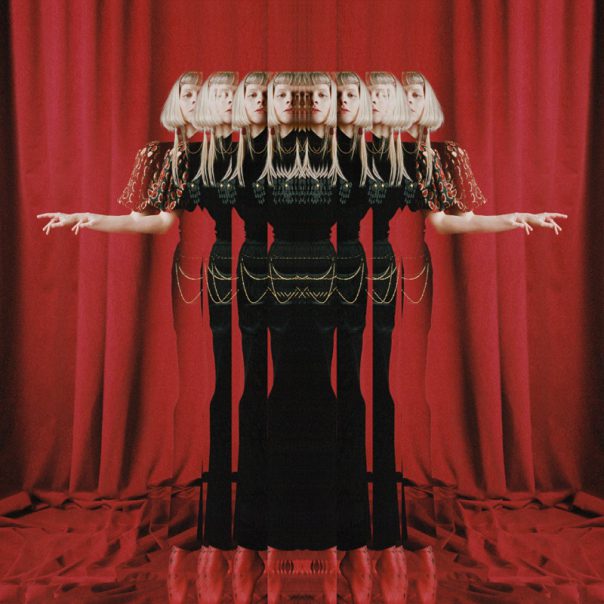The creation of “Sublimnalities” has many beginnings – eight in fact. Seven students and one instructor whose love for art, particularly murals, led them to De Anza art classes and eventually into one another.
“We had a class together, all of us.” said Eugene Rodriguez, adviser to the mural project. He went to one of his students, Michael Selby, and asked if he wanted to work on a mural. “[Selby] got his crew … he went to the people he knew from that class,” artists in contemporary society.
So, now, two years after – one year of planning, sketching, selecting images gathered from proposals from the student body, and one year of painting – the locally acclaimed muralists of “Sublimnalities” discussed their tribute to the history of political activism and thanked those who made it happen last Wednesday afternoon in the L-Quad.
The muralists and Rodriguez thanked the 1999-2000 De Anza Associated Student Body government for their continual support and funding. Rodriguez said, “they were great. Sharla [Stevens] and Les [Leonardo] were great,” former DASB president and vice president, respectively. The artists also thanked the support of De Anza College President Martha Kanter and the Dean of Creative Arts Nancy Canter.
As a student made mural, artist Maria Pugnetti recognized the student activism on campus at the time of sketching – the walkout surrounding Propositions 21 and 22, the delegation of women to Chiapas, and the anti-World Trade Organization protests in Seattle.
DASB presidential candidate, Luis Bocaletti, who helped organize the walkout said, “Murals are the ultimate message about our people … they serve to educate.”
Before reading from the “Sublimnalities” mission statement, Pugnetti said, “this is our account of the experience as concisely as we can put it because it is a vast, vast project. And it’s two years of just amazing roller coaster, like the struggles of collaborating and doing outreach and beauracratic stuff and etc. and etc.”
The muralists, John Daguia, Andy Gouveia, Rebecca Hartman, Erin Kawamata, Luke, Pugnetti, and Selby thanked Rodriguez. “… for inspiring and challenging … for encouraging to express ourselves from the gut of our souls,” Selby said.
Kanter presented Rodriguez with an award “for leadership in working with the art on campus committee to envision the mural project itself,” she said. “We want students in our community to appreciate the aesthetic expressions of human kind.”
“Dressed up for the occasion” Luke said, “this is my moment. And at this moment in my lifetime, I am struck with a sense of urgency. We live in a world of contradiction and paradox.”
According to Luke, we live our lives believing that we are part of a progressive society, dedicated to creating a more pleasant world for everyone to live in. He says, at the same time, we ingest, wear and participate in various forms of violence and oppression. “That is the truth,” he said.”Now all of a sudden, we reflect back to a moment in our lives where we truly believe something. Our bodies momentarily surge for the rejuvenate sense of urgency to change the system.”
He said that surge does not last and eventually dies out. “The system persists,” he said. As a result, he said some have learned how to profit from the very structures they have sought to dismantle, which leads to “passive acceptance.”
Luke said, “The purpose of this mural is to reawaken your senses … If you become dazzled by the artwork you see, I hope that it is in response to the mural’s content and it’s impact as a political statement and not as a beauracratic device.”
That said, Kanter handed a pair of scissors to the artists “to officially inaugurate the mural” by cutting the red ribbon that surrounded it.
Kanter said her first impressions of the mural are that it is “extraordinary. Compelling. Compelling about political issues of our time, social issues of our time, demographic changes we’re facing, technological changes. For me, it’s a center of the intersection of art, science, technology, dialogue, engagement, inspiration,” she said.
Luke says that the mural does not exist for aesthetic beauty and that it does not exist to appease the masses. “It does not exist as a commodity, although the bar code, you might think otherwise. It is for the people of this college and community to become an active participant of the world they live in, and to take notice, the structures, which exist around them.”
Protecting the mural
According to Rodriguez, the mural is laced with a UV protector. “And it does have a graffiti protector,” he said. He says that there is a mural place in San Francisco that works with a chemical company to develop a product used on “Sublimnalities.” “Four coats of anti-graffiti on it,” he said. “It’s not going to stop a nail or a hammer from scraping off.” He said that spray paint should be able to take off easily.
Future murals
Other than art that’s purchased from the art show, Rodriguez says, that the Creative Arts Division will try to get one mural every year. “Not this size. Not this size,” he chuckled. He said they plan to construct smaller murals, painted on three panels, rather than seven. “That’d be nice, to put around on campus. That would take about two people to paint,” Rodriguez said.
Panels
Rodriguez said that a lot of murals have been done on panels. “They’re just easier to work on.” He said that it would have been impossible to work on in front of everyone in the L-Quad. In addition, Rodriguez said, “The hours that they work … they can’t work here in the middle of night.”
Last couple of weeks
“It only took two weeks to go up actually.” He said that the people, who helped build the frame, caulked the whole thing. “They were really, really great.” He said that there is a wooden structure in the back and that the panels are steel. “They’re sealed so there’s no water that would get into it.”
Rodriguez said that he was quite nervous a couple of weeks ago when they weren’t sure if they were going to make deadline. “So, I came out here early one morning and I had my latte and I meditated with the piece and I asked what was the legacy I would like to leave here at De Anza College … This is the day. We have to be done.”








